Rapid Determination of Non-Steroidal Anti-Inflammatory Drugs in Urine Samples after In-Matrix Derivatization and Fabric Phase Sorptive Extraction-Gas Chromatography-Mass Spectrometry Analysis
Abstract
1. Introduction
2. Results and Discussion
2.1. Screening of FPSE Membrane
2.2. Screening of Back-Extraction Solvent
2.3. Optimization of Derivatization Conditions
2.4. Multivariate Optimization
2.4.1. Plackett–Burman Design (PBD)
2.4.2. Central Composite Design (CCD)
2.4.3. Analytical Performance of the Method
2.4.4. Evaluation of Green Character of the Proposed Method
2.5. Application to Real Samples
3. Experimental Section
3.1. Materials and Methods
3.2. Preparation of Standards and Samples
3.3. Fabrication of FPSE Membrane
3.4. In-matrix Derivatization and FPSE Procedure
3.5. Gas Chromatography-Mass Spectrometric (GC-MS) Analysis
3.6. Multivariate Optimization
3.7. Method Validation
4. Conclusions
Supplementary Materials
Author Contributions
Funding
Institutional Review Board Statement
Informed Consent Statement
Data Availability Statement
Acknowledgments
Conflicts of Interest
References
- Madikizela, L.M.; Chimuka, L. Determination of ibuprofen, naproxen and diclofenac in aqueous samples using a multi-template molecularly imprinted polymer as selective adsorbent for solid-phase extraction. J. Pharm. Biomed. Anal. 2016, 128, 210–215. [Google Scholar] [CrossRef] [PubMed]
- Caro, E.; Marcé, R.M.; Cormack, P.A.G.; Sherrington, D.C.; Borrull, F. A new molecularly imprinted polymer for the selective extraction of naproxen from urine samples by solid-phase extraction. J. Chromatogr. B Anal. Technol. Biomed. Life Sci. 2004, 813, 137–143. [Google Scholar] [CrossRef] [PubMed]
- Sultan, M.; Stecher, G.; Stoggl, W.; Bakry, R.; Zaborski, P.; Huck, C.; El Kousy, N.; Bonn, G. Sample Pretreatment and Determination of Non Steroidal Anti-Inflammatory Drugs (NSAIDs) in Pharmaceutical Formulations and Biological Samples (Blood, Plasma, Erythrocytes) by HPLC-UV-MS and μ-HPLC. Curr. Med. Chem. 2005, 12, 573–588. [Google Scholar] [CrossRef] [PubMed]
- Ayazi, Z.; Rafighi, P. Preparation and application of a carbon nanotube reinforced polyamide-based stir bar for sorptive extraction of naproxen from biological samples prior to its spectrofluorometric determination. Anal. Methods 2015, 7, 3200–3210. [Google Scholar] [CrossRef]
- Tartaglia, A.; Kabir, A.; D’Ambrosio, F.; Ramundo, P.; Ulusoy, S.; Ulusoy, H.; Merone, G.; Savini, F.; D’Ovidio, C.; De Grazia, U.; et al. Fast off-line FPSE-HPLC-PDA determination of six NSAIDs in saliva samples. J. Chromatogr. B Anal. Technol. Biomed. Life Sci. 2020, 1144, 122082. [Google Scholar] [CrossRef]
- González-Ruiz, V.; Martín, M.A. Isolation and Quantitative Methods for Analysis of Non-Steroidal Anti-Inflammatory Drugs. Anti-Inflammatory Anti-Allergy Agents Med. Chem. 2012, 11, 65–95. [Google Scholar] [CrossRef]
- Han, X.; Chen, J.; Li, Z.; Qiu, H. Combustion fabrication of magnetic porous carbon as a novel magnetic solid-phase extraction adsorbent for the determination of non-steroidal anti-inflammatory drugs. Anal. Chim. Acta 2019, 1078, 78–89. [Google Scholar] [CrossRef]
- Jain, R.; Singh, R. (Eds.) Microextraction Techniques in Analytical Toxicology; CRC Press: Boca Raton, FL, USA, 2021. [Google Scholar]
- Bazregar, M.; Rajabi, M.; Yamini, Y.; Asghari, A.; Hemmati, M. Tandem air-agitated liquid–liquid microextraction as an efficient method for determination of acidic drugs in complicated matrices. Anal. Chim. Acta 2016, 917, 44–52. [Google Scholar] [CrossRef]
- Sandrin, V.S.S.; Oliveira, G.M.; Weckwerth, G.M.; Polanco, N.L.D.H.; Faria, F.A.C.; Santos, C.F.; Calvo, A.M. Analysis of Different Methods of Extracting NSAIDs in Biological Fluid Samples for LC-MS/MS Assays: Scoping Review. Metabolites 2022, 12, 751. [Google Scholar] [CrossRef]
- Gemuh, C.V.; Macháček, M.; Solich, P.; Horstkotte, B. Renewable sorbent dispersive solid phase extraction automated by Lab-In-Syringe using magnetite-functionalized hydrophilic-lipophilic balanced sorbent coupled online to HPLC for determination of surface water contaminants. Anal. Chim. Acta 2022, 1210, 339874. [Google Scholar] [CrossRef]
- Manousi, N.; Kabir, A.; Furton, K.G.; Zachariadis, G.A.; Rosenberg, E. Expanding the applicability of magnet integrated fabric phase sorptive extraction in food analysis: Extraction of triazine herbicides from herbal infusion samples. Microchem. J. 2022, 179, 107524. [Google Scholar] [CrossRef]
- Liu, S.; Li, S.; Yang, W.; Gu, F.; Xu, H.; Wang, T.; Sun, D.; Hou, X. Magnetic nanoparticle of metal-organic framework with core-shell structure as an adsorbent for magnetic solid phase extraction of non-steroidal anti-inflammatory drugs. Talanta 2019, 194, 514–521. [Google Scholar] [CrossRef]
- Kabir, A.; Furton, K.G. Fabric Phase Sorptive Extractor (FPSE); United States Patent and Trademark Office: Alexandria, VA, USA, 2014. [Google Scholar]
- Manousi, N.; Kabir, A.; Zachariadis, G.A. Fabric Phase Sorptive Extraction in Analytical Toxicology. In Microextraction Techniques in Analytical Toxicology; CRC Press: Boca Raton, FL, USA, 2021; pp. 183–192. [Google Scholar] [CrossRef]
- Jain, R.; Singh, R. Applications of dispersive liquid–liquid micro-extraction in forensic toxicology. TrAC Trends Anal. Chem. 2016, 75, 227–237. [Google Scholar] [CrossRef]
- Jain, R.; Singh, R.; Kabir, A. Microextraction Techniques in Analytical Toxicology: An Overview. In Microextraction Techniques in Analytical Toxicology; CRC Press: Boca Raton, FL, USA, 2021; pp. 1–10. [Google Scholar] [CrossRef]
- Jha, R.R.; Thakur, R.S.; Jain, R. Dispersive Liquid-Liquid Microextraction and Its Variants. In Microextraction Techniques in Analytical Toxicology; CRC Press: Boca Raton, FL, USA, 2021; pp. 159–170. [Google Scholar] [CrossRef]
- Kumar, R.; Gaurav, H.; Malik, A.K.; Kabir, A.; Furton, K.G. Efficient analysis of selected estrogens using fabric phase sorptive extraction and high performance liquid chromatography-fluorescence detection. J. Chromatogr. A 2014, 1359, 16–25. [Google Scholar] [CrossRef]
- Samanidou, V.; Galanopoulos, L.-D.; Kabir, A.; Furton, K.G. Fast extraction of amphenicols residues from raw milk using novel fabric phase sorptive extraction followed by high-performance liquid chromatography-diode array detection. Anal. Chim. Acta 2015, 855, 41–50. [Google Scholar] [CrossRef]
- Agadellis, E.; Tartaglia, A.; Locatelli, M.; Kabir, A.; Furton, K.G.; Samanidou, V. Mixed-mode fabric phase sorptive extraction of multiple tetracycline residues from milk samples prior to high performance liquid chromatography-ultraviolet analysis. Microchem. J. 2020, 159, 105437. [Google Scholar] [CrossRef]
- Lioupi, A.; Kabir, A.; Furton, K.G.; Samanidou, V. Fabric phase sorptive extraction for the isolation of five common antidepressants from human urine prior to HPLC-DAD analysis. J. Chromatogr. B Anal. Technol. Biomed. Life Sci. 2019, 1118–1119, 171–179. [Google Scholar] [CrossRef]
- Alampanos, V.; Kabir, A.; Furton, K.G.; Roje, Ž.; Vrček, I.V.; Samanidou, V. Fabric phase sorptive extraction combined with high-performance-liquid chromatography-photodiode array analysis for the determination of seven parabens in human breast tissues: Application to cancerous and non-cancerous samples. J. Chromatogr. A 2020, 1630, 461530. [Google Scholar] [CrossRef]
- Ulusoy, H.I.; Köseoğlu, K.; Kabir, A.; Ulusoy, S.; Locatelli, M. Fabric phase sorptive extraction followed by HPLC-PDA detection for the monitoring of pirimicarb and fenitrothion pesticide residues. Mikrochim. Acta 2020, 187, 337. [Google Scholar] [CrossRef]
- Kaur, R.; Kaur, R.; Rani, S.; Malik, A.K.; Kabir, A.; Furton, K.G. Application of fabric phase sorptive extraction with gas chromatography and mass spectrometry for the determination of organophosphorus pesticides in selected vegetable samples. J. Sep. Sci. 2019, 42, 862–870. [Google Scholar] [CrossRef]
- Alampanos, V.; Kabir, A.; Furton, K.; Samanidou, V. Magnet integrated fabric phase sorptive extraction of selected endocrine disrupting chemicals from human urine followed by high-performance liquid chromatography—Photodiode array analysis. J. Chromatogr. A 2021, 1654, 462459. [Google Scholar] [CrossRef]
- Mudiam, M.K.R.; Jain, R.; Singh, R. Application of ultrasound-assisted dispersive liquid-liquid microextraction and automated in-port silylation for the simultaneous determination of phenolic endocrine disruptor chemicals in water samples by gas chromatography-triple quadrupole mass spectrometry. Anal. Methods 2014, 6, 1802–1810. [Google Scholar] [CrossRef]
- Racamonde, I.; Rodil, R.; Quintana, J.B.; Sieira, B.J.; Kabir, A.; Furton, K.G.; Cela, R. Fabric phase sorptive extraction: A new sorptive microextraction technique for the determination of non-steroidal anti-inflammatory drugs from environmental water samples. Anal. Chim. Acta 2015, 865, 22–30. [Google Scholar] [CrossRef]
- Ribeiro, C.; Ribeiro, A.R.; Maia, A.S.; Tiritan, M.E. Occurrence of Chiral Bioactive Compounds in the Aquatic Environment: A Review. Symmetry 2017, 9, 215. [Google Scholar] [CrossRef]
- Dwivedi, A.D.; Gopal, K.; Jain, R. Strengthening adsorption characteristics of non-steroidal anti-inflammatory drug onto microwave-assisted mesoporous material: Process design, mechanism and characterization. Chem. Eng. J. 2011, 168, 1279–1288. [Google Scholar] [CrossRef]
- Jain, R.; Mudiam, M.K.R.; Chauhan, A.; Ch, R.; Murthy, R.; Khan, H.A. Simultaneous derivatisation and preconcentration of parabens in food and other matrices by isobutyl chloroformate and dispersive liquid–liquid microextraction followed by gas chromatographic analysis. Food Chem. 2013, 141, 436–443. [Google Scholar] [CrossRef]
- Mudiam, M.K.R.; Jain, R.; Varshney, M.; Ch, R.; Chauhan, A.; Goyal, S.K.; Khan, H.A.; Murthy, R. In matrix derivatization of trichloroethylene metabolites in human plasma with methyl chloroformate and their determination by solid-phase microextraction–gas chromatography-electron capture detector. J. Chromatogr. B Anal. Technol. Biomed. Life Sci. 2013, 925, 63–69. [Google Scholar] [CrossRef]
- Mudiam, M.K.R.; Jain, R.; Dua, V.K.; Singh, A.K.; Sharma, V.P.; Murthy, R.C. Application of ethyl chloroformate derivatization for solid-phase microextraction–gas chromatography–mass spectrometric determination of bisphenol-A in water and milk samples. Anal. Bioanal. Chem. 2011, 401, 1695–1701. [Google Scholar] [CrossRef] [PubMed]
- Nowak, P.M.; Wietecha-Posłuszny, R.; Pawliszyn, J. White Analytical Chemistry: An approach to reconcile the principles of Green Analytical Chemistry and functionality. TrAC Trends Anal. Chem. 2021, 138, 116223. [Google Scholar] [CrossRef]
- Jain, R.; Mudiam, M.K.R.; Ch, R.; Chauhan, A.; Khan, H.A.; Murthy, R. Ultrasound assisted dispersive liquid–liquid microextraction followed by injector port silylation: A novel method for rapid determination of quinine in urine by GC–MS. Bioanalysis 2013, 5, 2277–2286. [Google Scholar] [CrossRef] [PubMed]
- Azzouz, A.; Ballesteros, E. Gas chromatography–mass spectrometry determination of pharmacologically active substances in urine and blood samples by use of a continuous solid-phase extraction system and microwave-assisted derivatization. J. Chromatogr. B Anal. Technol. Biomed. Life Sci. 2012, 891–892, 12–19. [Google Scholar] [CrossRef]
- Avino, P.; Notardonato, I.; Passarella, S.; Russo, M.V. Determination of Non-Steroidal Anti-Inflammatory Drugs in Animal Urine Samples by Ultrasound Vortex-Assisted Dispersive Liquid–Liquid Microextraction and Gas Chromatography Coupled to Ion Trap-Mass Spectrometry. Appl. Sci. 2020, 10, 5441. [Google Scholar] [CrossRef]
- Yilmaz, B.; Sahin, H.; Erdem, A.F. Determination of naproxen in human plasma by GC-MS. J. Sep. Sci. 2014, 37, 997–1003. [Google Scholar] [CrossRef]
- Wolecki, D.; Caban, M.; Pazdro, K.; Mulkiewicz, E.; Stepnowski, P.; Kumirska, J. Simultaneous determination of non-steroidal anti-inflammatory drugs and natural estrogens in the mussels Mytilus edulis trossulus. Talanta 2019, 200, 316–323. [Google Scholar] [CrossRef]
- Krokos, A.; Tsakelidou, E.; Michopoulou, E.; Raikos, N.; Theodoridis, G.; Gika, H. NSAIDs Determination in Human Serum by GC-MS. Separations 2018, 5, 37. [Google Scholar] [CrossRef]
- Sajid, M.; Płotka-Wasylka, J. Green analytical chemistry metrics: A review. Talanta 2022, 238, 123046. [Google Scholar] [CrossRef]
- Reddersen, K.; Heberer, T. Formation of an artifact of diclofenac during acidic extraction of environmental water samples. J. Chromatogr. A 2003, 1011, 221–226. [Google Scholar] [CrossRef]
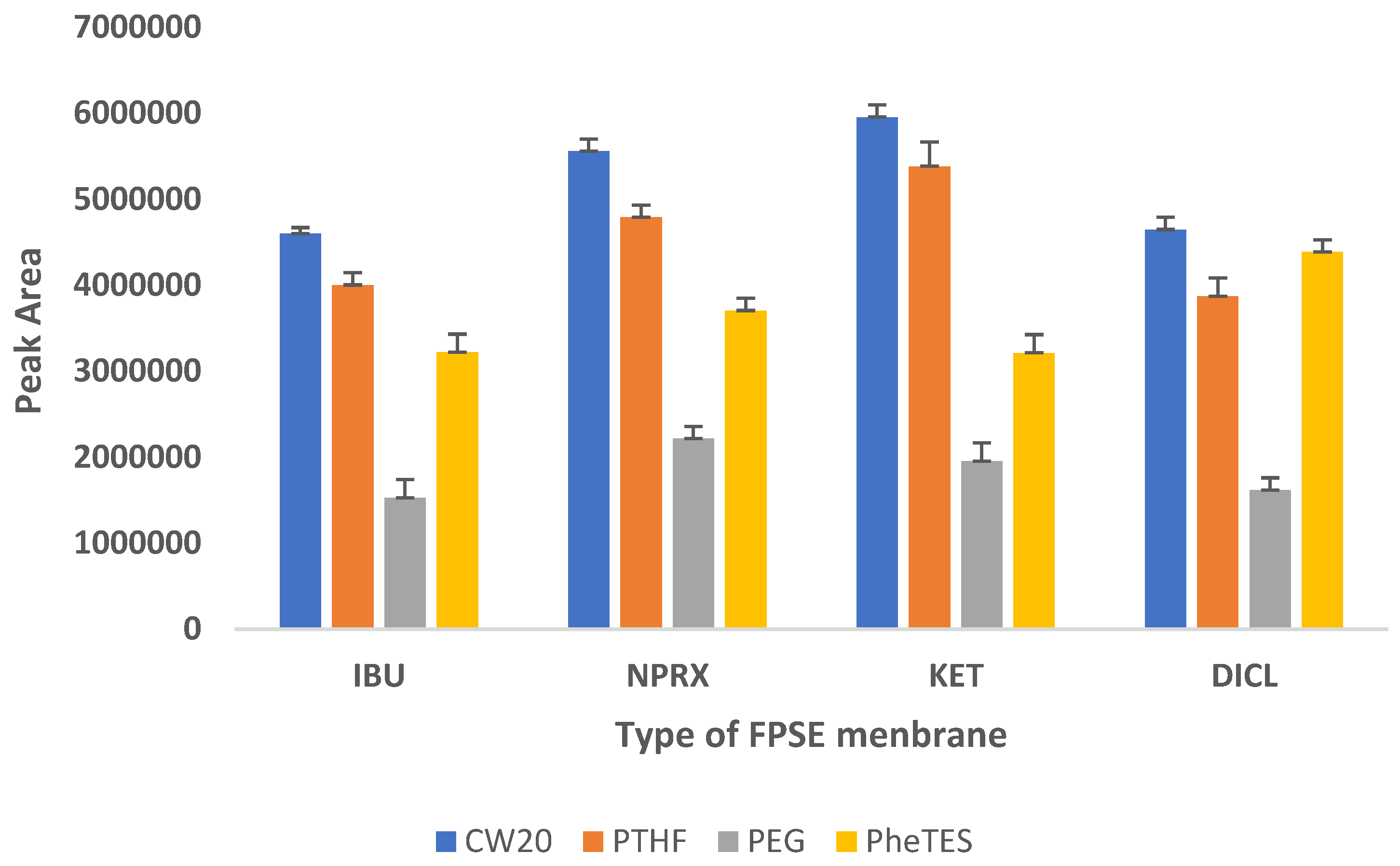
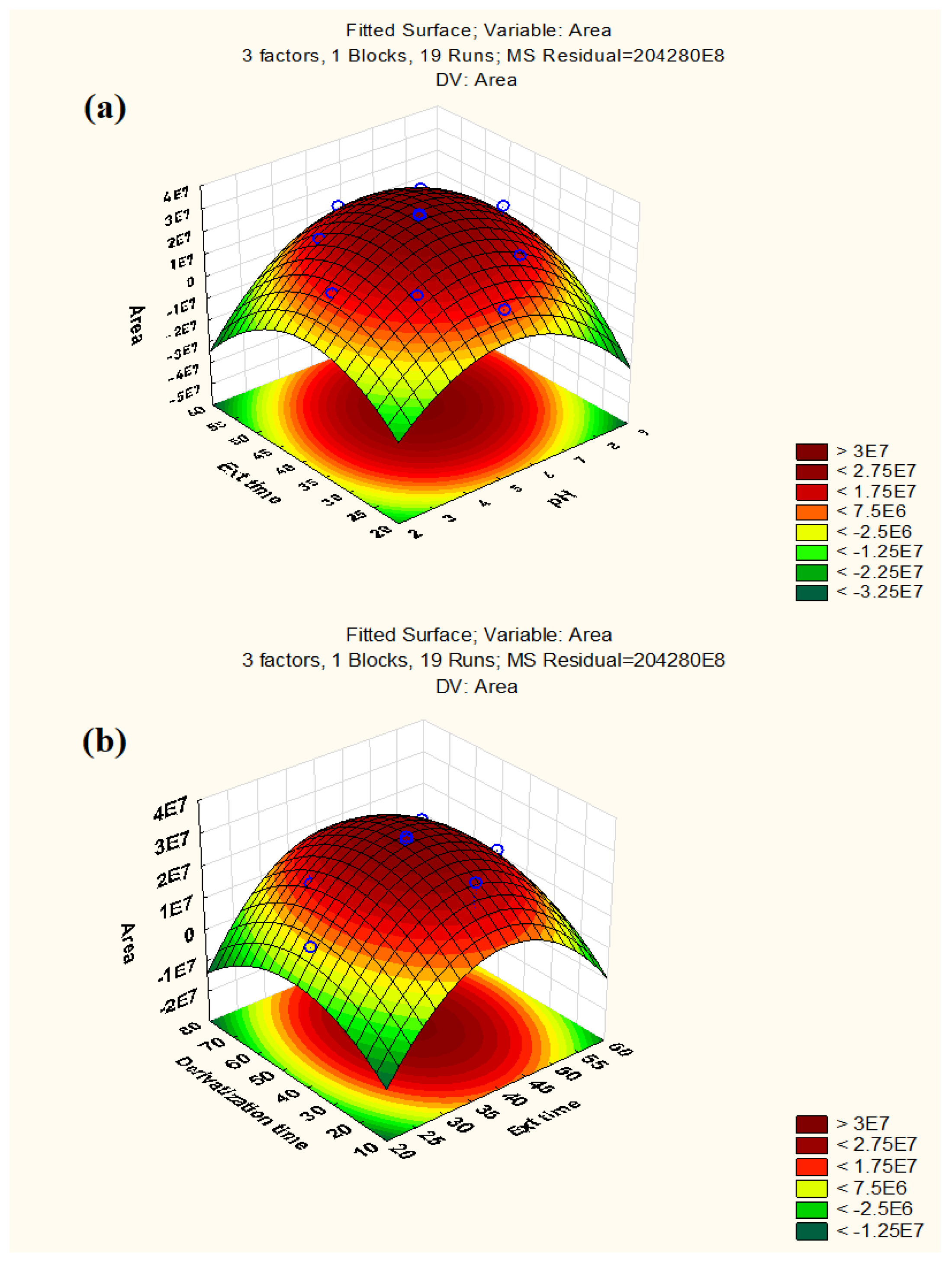
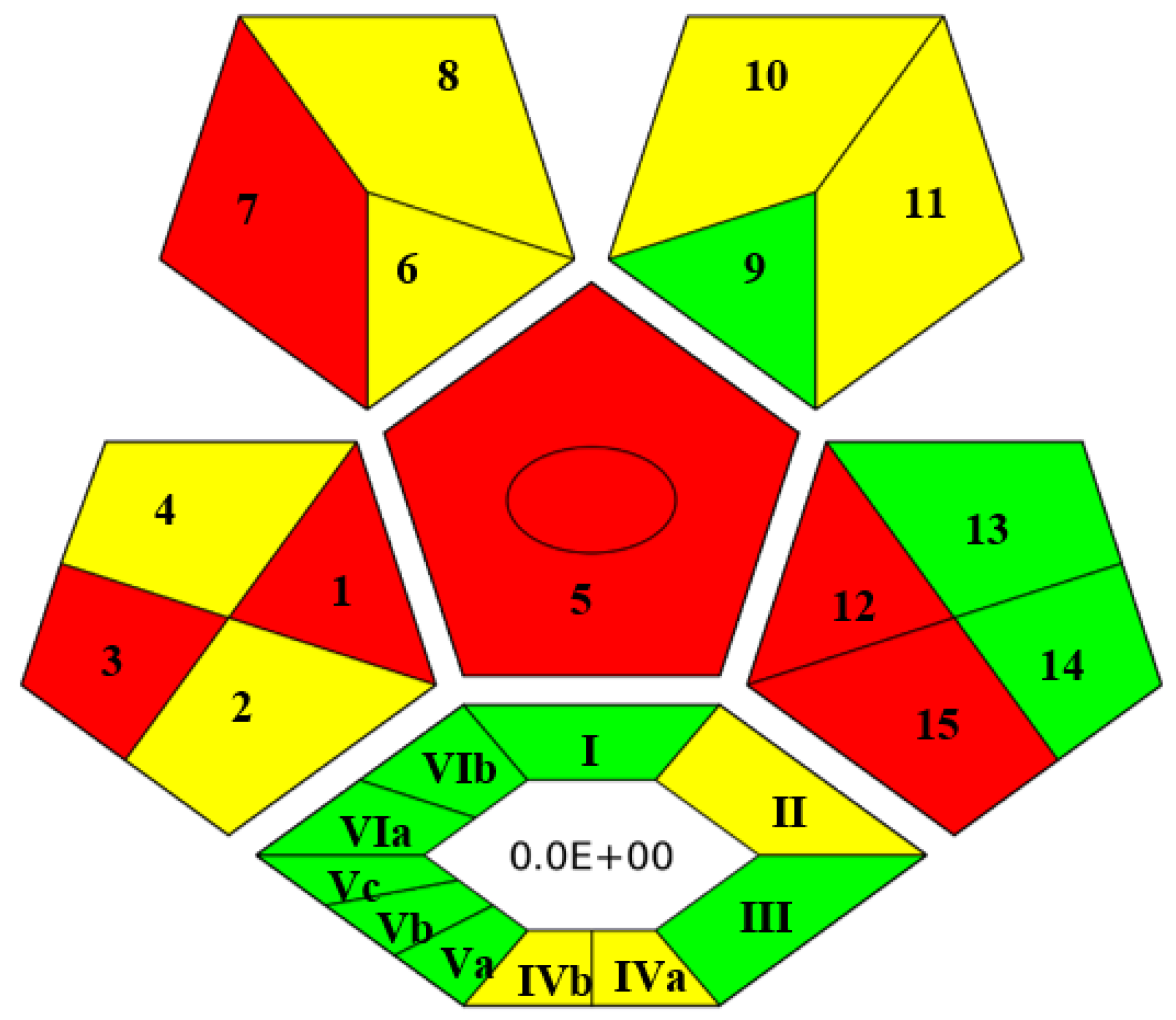


| Factors | Levels | |
|---|---|---|
| Low (−1) | High (+1) | |
| Volume of sample (mL) | 5 | 10 |
| Ionic strength | 0 | 10 |
| pH | 5 | 8 |
| Extraction time (min) | 30 | 60 |
| Extraction speed (rpm) | 500 | 1000 |
| Elution time (min) | 5 | 15 |
| Derivatization time (s) | 30 | 60 |
| Factors | Levels | Star points | |||
|---|---|---|---|---|---|
| Low (−1) | Central (0) | High (+1) | −α | +α | |
| pH | 4 | 5.5 | 7 | 2.977 | 8.02 |
| Extraction time (min) | 30 | 40 | 50 | 23.18 | 56.81 |
| Derivatization time (s) | 30 | 45 | 60 | 19.77 | 70.22 |
| Runs | pH | Extraction Speed (RPM) | Volume of Sample (ML) |
|---|---|---|---|
| 1 | −1 | −1 | −1 |
| 2 | −1 | −1 | +1 |
| 3 | −1 | +1 | −1 |
| 4 | −1 | +1 | +1 |
| 5 | +1 | −1 | −1 |
| 6 | +1 | −1 | +1 |
| 7 | +1 | −1 | −1 |
| 8 | +1 | +1 | +1 |
| 9 | -α | −1 | 0 |
| 10 | +α | −1 | 0 |
| 11 | 0 | −α | 0 |
| 12 | 0 | +α | 0 |
| 13 | 0 | 0 | −α |
| 14 | 0 | 0 | +α |
| 15 | 0 | 0 | 0 |
| 16 | 0 | 0 | 0 |
| 17 | 0 | 0 | 0 |
| 18 | 0 | 0 | 0 |
| 19 | 0 | 0 | 0 |
| Drug | LOD (µg mL−1) | LOQ (µg mL−1) | R2 | Linearity (µg mL−1) | Calibration Curve | Precision (%RSD) | |||||
|---|---|---|---|---|---|---|---|---|---|---|---|
| Intra-Day (µg mL−1) | Inter-Day (µg mL−1) | ||||||||||
| 0.3 | 1 | 10 | 0.3 | 1 | 10 | ||||||
| DIC | 0.0049 | 0.016 | 0.998 | 0.1–10 | y = (17,062 ± 297.6)x + (29,015 ± 1365.9) | 5.2 | 4.1 | 3.1 | 6.2 | 8.1 | 9.2 |
| IBU | 0.0022 | 0.0072 | 0.999 | 0.1–10 | y = (35,576 ± 447.8)x + (22,877 ± 2055.1) | 3.8 | 6.2 | 5.8 | 8.0 | 5.4 | 6.5 |
| NAP | 0.0015 | 0.0049 | 0.999 | 0.1–10 | y = (43,090± 429.5)x + (41,269 ± 1971.3) | 4.6 | 3.7 | 2.4 | 9.5 | 7.1 | 5.6 |
| KET | 0.0031 | 0.0103 | 0.999 | 0.1–10 | y = (13,066 ± 128.6)x + (28,573 ± 590.3) | 6.2 | 4.9 | 3.5 | 7.5 | 6.4 | 8.8 |
| Drug | RR% | Absolute Recovery (%) | ||||
|---|---|---|---|---|---|---|
| 0.3 µg mL−1 | 1 µg mL−1 | 10 µg mL−1 | 0.3 µg mL−1 | 1 µg mL−1 | 10 µg mL−1 | |
| DIC | 90.1 | 96.2 | 98.2 | 86.6 | 95.6 | 98.2 |
| IBU | 92.5 | 89.5 | 97.5 | 108.1 | 113.1 | 100.6 |
| NAP | 87.6 | 94.4 | 96 | 109.4 | 112.2 | 100.2 |
| KET | 92.9 | 96.7 | 98.9 | 99.8 | 91.8 | 99.3 |
| Sr. No. | Method | Matrix | Analyte | LOD (ng mL−1) | LOQ (ng mL−1) | Linearity Range (ng mL−1) | Precision | Ref. |
|---|---|---|---|---|---|---|---|---|
| 1 | SPE-GC-MS | Urine and Blood | ASA, Carbamazepine, Chloramphenicol, Clofibric acid, DIC, 17α-ethinylestradiol, 17β-estradiol, Estrone, Florfenicol, Flunixin, IBU, KET, MFA, Metoprolol, NAR, NFA, APAP, Phenyl butazone, Propranolol, Pyrimethaimne, Thiamphenicol, Triclosan | 0.0002–0.0013 (blood) 0.0008–0.0056 (urine) | NA | 0.0006–5 | <7.5% | 36 |
| 2 | DLLME-GCMS | Animal Urine | ASA, IBU, NAP, KET | 0.1–4.1 | 0.2–4.7 | 1–100 | <5% | 37 |
| 3 | LLE-GC-MS | Human Plasma | NAP | 30 | 100 | 100–5000 | 5.14% | 38 |
| 4 | ASE-SPE-GCMS | Tissue | IBU, APAP, DIC, NAR, KET, and three estrogens | 1000–7000 | 3000–22,000 | 19,500–25,000,000 | <5% | 39 |
| 5 | LLE-GC-MS | Human Serum | DCF, APAP, IBP, NI, NFA, MFA, NAR, ASA, SA | 2–124 | 6–414 | 200–1,000,000 | <5% | 40 |
| 6 | FPSE-GC-MS | Environment Water | IBU, NAR, KET, and DIC | 0.8–5 | 3–15 | 5–500 | <5% | 28 |
| 7 | FPSE GC-MS | Human Urine | IBU, NAR, KET, and DIC | 1.5–4.9 | 4.9–16 | 100–1000 | <7% | Present study |
| Drug | Molecular Weight (before Derivatization) | Retention Time (min) | Selected Ion (m/z) | Structure of Polar Drugs (after Derivatization) |
|---|---|---|---|---|
| Ibuprofen | 206.28 | 12.36 | 161, 220, 117 |  |
| Ketoprofen | 254.28 | 17.01 | 209, 105, 268 | 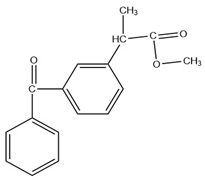 |
| Diclofenac | 296.1 | 17.55 | 214, 242, 304 | 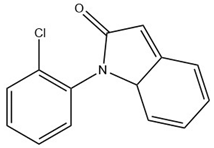 |
| Naproxen | 230.26 | 16.23 | 185, 244 | 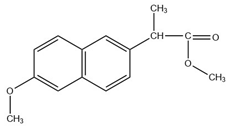 |
| Pregabalin | 159.23 | 12.57 | 88,158,114 | 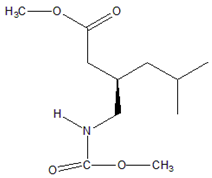 |
Publisher’s Note: MDPI stays neutral with regard to jurisdictional claims in published maps and institutional affiliations. |
© 2022 by the authors. Licensee MDPI, Basel, Switzerland. This article is an open access article distributed under the terms and conditions of the Creative Commons Attribution (CC BY) license (https://creativecommons.org/licenses/by/4.0/).
Share and Cite
Jain, B.; Jain, R.; Kabir, A.; Sharma, S. Rapid Determination of Non-Steroidal Anti-Inflammatory Drugs in Urine Samples after In-Matrix Derivatization and Fabric Phase Sorptive Extraction-Gas Chromatography-Mass Spectrometry Analysis. Molecules 2022, 27, 7188. https://doi.org/10.3390/molecules27217188
Jain B, Jain R, Kabir A, Sharma S. Rapid Determination of Non-Steroidal Anti-Inflammatory Drugs in Urine Samples after In-Matrix Derivatization and Fabric Phase Sorptive Extraction-Gas Chromatography-Mass Spectrometry Analysis. Molecules. 2022; 27(21):7188. https://doi.org/10.3390/molecules27217188
Chicago/Turabian StyleJain, Bharti, Rajeev Jain, Abuzar Kabir, and Shweta Sharma. 2022. "Rapid Determination of Non-Steroidal Anti-Inflammatory Drugs in Urine Samples after In-Matrix Derivatization and Fabric Phase Sorptive Extraction-Gas Chromatography-Mass Spectrometry Analysis" Molecules 27, no. 21: 7188. https://doi.org/10.3390/molecules27217188
APA StyleJain, B., Jain, R., Kabir, A., & Sharma, S. (2022). Rapid Determination of Non-Steroidal Anti-Inflammatory Drugs in Urine Samples after In-Matrix Derivatization and Fabric Phase Sorptive Extraction-Gas Chromatography-Mass Spectrometry Analysis. Molecules, 27(21), 7188. https://doi.org/10.3390/molecules27217188










